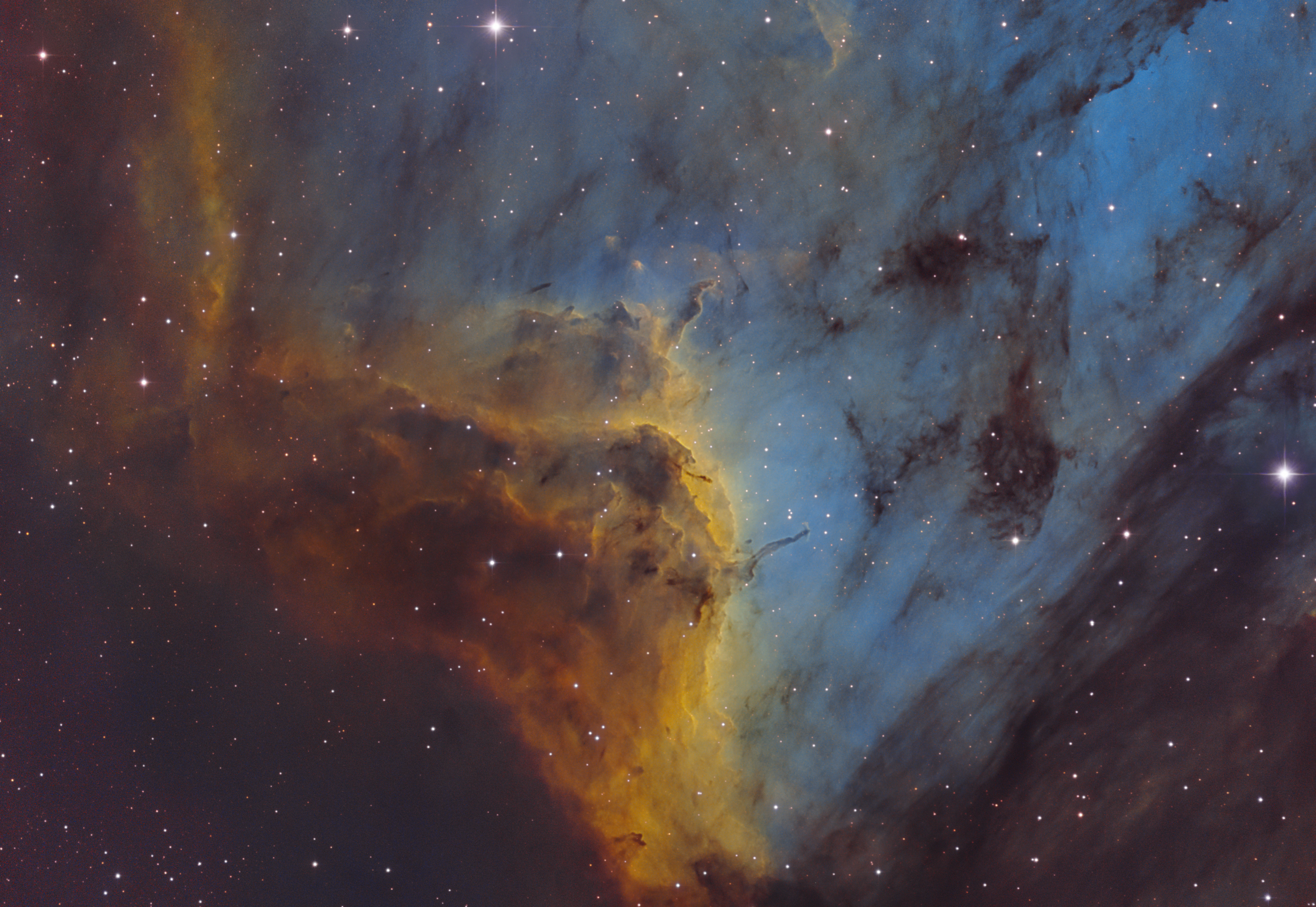
IC 5070 Pelican nebula - Detail in Hubble
Gas and dust cloud region in the constellation of cygnus.

Gas and dust cloud region in the constellation of cygnus.
The pelican nebula is part of a much larger gas and dust cloud region in the constellation of Swan. However, a gas cloud of dark dust let the North America nebula and the western pelican nebula (IC 5067 and IC 5070) appear as two independent diffuse nebulae.
| Object: | IC 5070 Detail |
| Date of exposures: | 06.08.2017, 05.08.2017, 07.09.2015, 02.09.2015, 28.08.2015 |
| Distance: | 2.000 Lightyears |
| Exposures: | Ha: 14 x 1200 Sec., [OIII]: 10 X 1200 Sec., [SII]: 8 x 1200 Sec., RGB: 9 x 300 Sec., Sum: 10,0 hrs. |
| Telescope: | 10'', F4 Newton |
| Focal length: | 1000 mm |
| Filter: | Astrodon H-Alpha 5nm, [OIII] 3nm, [SII] 3nm, RGB |
| Camera: | Atik 460Exm |
| Guiding: | Off Axis Guider, Lodestar |
| Mount: | EQ8 |
In fact, it is one and the same interstellar cloud formation. Cosmic movement, star winds, and the gradual expansion of the object, show the apparent shape of a pelican.
This area is particularly rich in dark clouds and fronts of ionization. A distinctive detail of IC 5070 is the dark cloud, a so-called elephant's trunk, which penetrates the "back" of the pelican. In it new stars are formed. One is hidden in the dust at the tip of the trunk and only betrays itself by its jets, with the help of which the young star is released by the excess of the impulse of the gas clouds. The extent of the pelican has about 25 arcminutes almost the size of the moon. Since its discovery more than 100 years ago, the region, as well as its larger neighbor, the North American, has become much brighter.
The picture composition was made from data from two different years, 2015 and 2017.
Version from 2022:
